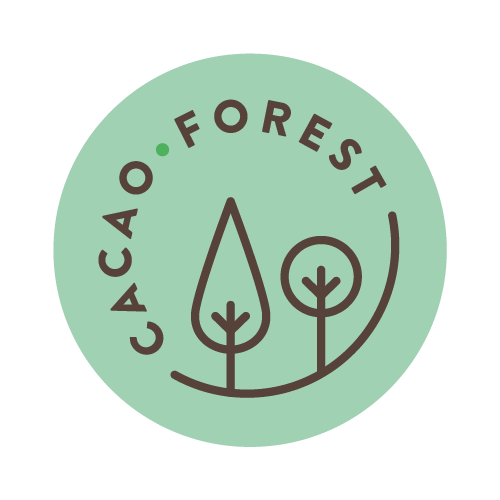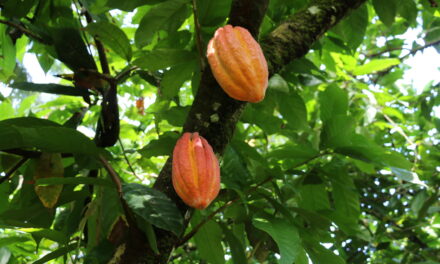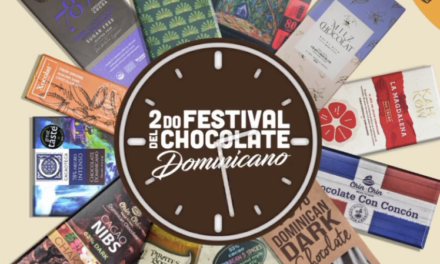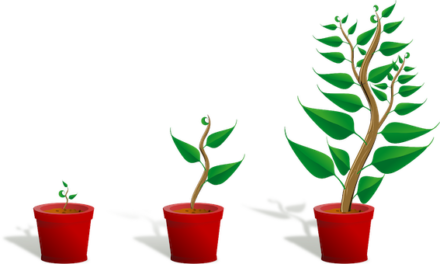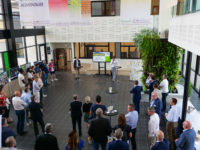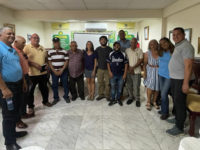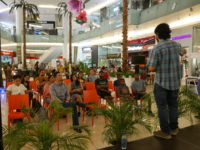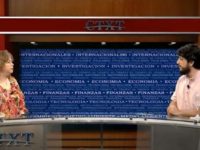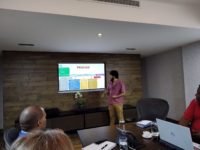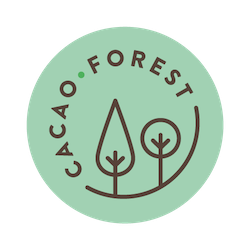Since Cacao Forest kicked off in the Dominican Republic in 2016, the Cacao Forest team has been hard at work developing the project on the ground. We talked to Alexandre Hasle de Barral, Cacao Forest coordinator in the Dominican Republic, to find out more about the Cacao Forest, agroforestry, and how the project is progressing.
Tell us a bit about yourself!
I work for TFT as Cacao Forest’s coordinator in the Dominican Republic. My background is in commerce, but after embarking a 14 month bike tour around the world, crossing 26 countries in a search for ecological solutions, I decided I wanted to change direction and turn more towards forest conservation and agroforestry. After carrying out studies in this area at AgroParisTech, I joined TFT in 2016 for the launch of Cacao Forest in the Dominican Republic.
There are many different possible solutions to securing the future of the cocoa cultivation. Why do you think agroforestry is the best option?
Agroforestry can be an excellent way of achieving economic prosperity for producer communities while preserving biodiversity. Instead of adopting a dogmatic vision, we try to identify the best systems that will ensure that producers have a certain prosperity and resilience against fluctuations in the cocoa market, while also achieving the environmental impacts we want.
Personally, I find this extremely interesting, and think there’s a kind of beauty in agroforestry systems like the ones you can find in the Dominican Republic. It’s this sort of poetry that makes me happy, that makes me wake up in the morning with a smile on my face.

What do you like about working for Cacao Forest? Why do you get up with a smile on your face?
Firstly, because this is a project that can have a positive impact on the ground, particularly because it connects environmental objectives with the possibility of helping farmers become more independent and better able to support themselves.
I also love that the project involves lots of different partners. Even though sometimes it isn’t easy to coordinate them, this range of partners allows for a real depth and diversity of viewpoints which I think is vital for the long term success of Cacao Forest. Agroforestry touches on a number of issues, from producers’ prosperity to the relationships between producers and local businesses, to the health of local ecosystems and the local economy. It’s by drawing on all these different partners that we can develop a better understanding of the core issues, and so work out how to achieve a better balance between the economy and the environment. For me, this is what makes Cacao Forest such a particularly interesting project.
What attracted you to the Cacao Forest project in particular?
I was drawn to Cacao Forest by the opportunity to get involved in an innovative agroforestry project that had an international scope, and more particularly by the fact that this scope included Latin America. My mother is Chilean and I wanted to have some new experiences in Latin America, beyond those that I’d had up to that point. I was also really attracted to Cacao Forest by its focus on connecting farmers to the markets, as well as by its scientific approach.
This scientific approach is important because we want to promote new agroforestry models, meaning that we need to be able to determine both the environmental impact of changing these models and what are we going to be able to produce, in what quantities, under what conditions, and so on. What really sets Cacao Forest apart is that our approach is also very focused on people and the markets. The aim is to create innovative models that will then be adopted by the small producers. As such, it’s vital that we have a good understanding of farmers’ daily reality, so that we can provide them with systems that are innovative but that they can apply themselves, now or in the future.
As regards the link to the markets, it’s very important to promote innovations that are also connected to the markets, for the simple reason that the producers often don’t know what the market conditions are or what they might be like in the future. We can help them by bringing them together entrepreneurs or companies that can help them sell their crops.

You’ve mentioned innovation a number of times. What’s innovative about Cacao Forest as opposed to other agroforestry systems?
We are very focused on finding solutions that address people’s’ needs and that connect farmers to the markets. If we can diversify farmers’ crops their revenue from cocoa will be supplemented by income from other species associated with it. Cacao Forest could also have a positive effect on the local environment by helping cocoa producers to grow other crops on their existing plantations or to keep existing cocoa agroforestry systems in place on their land instead of switching to monoculture.
TFT and CIRAD are working together on the research for Cacao Forest. I understand you’ve been involved in this effort on the ground. What kind of information were you gathering, and how did you go about doing it?
We based our research on direct conversations with producers. My colleague Giulia and I visited 70 producers to talk to them and better understand their daily realities. We carried out semi-structured interviews with them. We already knew the themes we wanted to discuss but we approached these as natural conversations, which helped us to better understand the producers’ point of view and the challenges they face, as well as understanding what their sources of revenue beyond cocoa were.
I spent the first half of my internship carrying out this on the ground survey, and the second half on analyzing the local markets to understand what the possible distribution networks may be for other produce grown in these agroforestry systems.
Where are you now with the Cacao Forest project?
Here in the Dominican Republic, we’re in the process of implementing what we call “connection to the markets”, which means putting producer communities in contact with local entrepreneurs who will sell their products. In parallel with this, I’m working with Martin Notaro, a PhD student with CIRAD who’s also based here, to coordinate CIRAD’s scientific research with Cacao Forest’s work on the ground. We are able to do this thanks to the relationships and trust we’ve built with producers and the understanding we’ve developed about their daily realities through extensive time spent in the field.

We’ve also just run a workshop exploring what resilience means for Dominican cocoa farmers. This involves examining in depth the challenges they’re facing, as well as looking at the possible solutions we can bring to the table and build together with them.
What’s next?
We’ve talked to a lot of farmers and many are interested in the project and in what we may be able to propose. Our goal now is to improve on these producers’ activities, which is why we’re currently working on testing different fruit collection methods with producers and a local entrepreneur. I’m looking forward to launching workshops to train producers about improving their farming practices.

